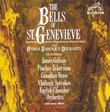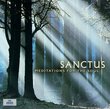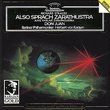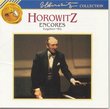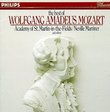| All Artists: Ludwig van Beethoven, Seiji Ozawa, Boston Symphony Orchestra, Rudolf Serkin, Julien Robbins, Faye Robinson, Mary Burgess, Kenneth Riegel Title: Beethoven: Piano Concerto No.3; Choral Fantasy Members Wishing: 0 Total Copies: 2 Label: Telarc Release Date: 10/25/1990 Genre: Classical Styles: Opera & Classical Vocal, Forms & Genres, Concertos, Historical Periods, Classical (c.1770-1830), Instruments, Keyboard Number of Discs: 1 SwapaCD Credits: 1 UPC: 089408006326 |
Search - Ludwig van Beethoven, Seiji Ozawa, Boston Symphony Orchestra :: Beethoven: Piano Concerto No.3; Choral Fantasy
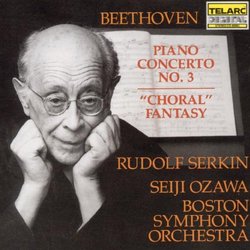 | Ludwig van Beethoven, Seiji Ozawa, Boston Symphony Orchestra Beethoven: Piano Concerto No.3; Choral Fantasy Genre: Classical
![header=[] body=[This CD is available to be requested as disc only.]](/images/attributes/disc.png?v=15401716) ![header=[] body=[This CD is available to be requested with the disc and back insert.]](/images/attributes/disc_back.png?v=15401716) ![header=[] body=[This CD is available to be requested with the disc and front insert.]](/images/attributes/disc_front.png?v=15401716) ![header=[] body=[This CD is available to be requested with the disc, front and back inserts.]](/images/attributes/disc_front_back.png?v=15401716) |
Larger Image |
CD DetailsSimilarly Requested CDs
|
CD ReviewsTwo Flawed Masterworks Robin Friedman | Washington, D.C. United States | 05/22/2006 (5 out of 5 stars) "This CD features two flawed but grand works of Beethoven. Beethoven's piano concerto no. 3, opus 37 and his choral fantasy opus 80 have much in common besides their C minor key. Both are large, ambitious works for piano and orchestra which show Beethoven in transition. The third piano concerto shows a Beethoven on the cusp between his early style and his second "heroic" style of composition; while the choral fantasy show Beethoven using the orchestra, piano and chorus in a manner prefiguring the Ninth Symphony. In addition to these similarities, critics over the years have pointed to certain structural flaws in both works. Be these flaws as they may, the third concerto and the choral fantasy constitute powerful and compelling music that wear well with time. They both constitute part of my earliest experiences with Beethoven. Rudolf Serkin (1903 -- 1991) recorded both works several times, and this recording dates from late in his career with Seiji Ozawa and the Boston Symphony Orchestra. The performances here are virtuosic and emotional. They capture the range of contrasts -- from the flamboyant and heroic to the lyrical and reflective that Beethoven poured into his scores. The third piano concerto probably dates from 1803 (although some scholars date it earlier). It was premiered in that year with Beethoven at the piano. In this concerto, at least in the first movement, Beethoven took as a model Mozart's C minor piano concerto, K. 491. Beethoven's opening theme in this work sounds much like the opening theme of Mozart's concerto, and there are many parallells throughout the opening movement. Beethoven both tried to emulate the K. 491 concerto and to show that he could produce a work in his own style and voice as good as or better than its model. Whether the third concerto equals Mozart's work is a debatable, probably unanswerable question. The work is rough around the edges and lacks Mozart's polish. But there is a passion and sweep to the third concerto that is Beethoven's own. As his music characteristically does, the third concerto pulls the listener and performer in, as does the music of almost no other composer, and makes them participants in the emotion of the score. Beethoven's third concerto opens with a long, highly symphonic orchestral introduction which his great admirer, Donald Tovey, found "dangerously close to a mistake" because its structure and harmonic changes drew attention away from concerto form of the work. The movement features two contrasting themes, a short abrubt opening phrase and a lyrical second theme. When the piano at length makes its entrance in three rising scale passages, it engages in a duel with the orchestra, contrasting lyrical, reflective, and fluttering themes with the sterner, heroical cast of the first theme. The movement alternates between the virtuosic and the lyrical; and in its drive and passion, works in the end, notwithstanding its difficulties. The second movement of this work is all Beethoven's own. It is a glowing largo in the key of E major, a highly distant key from the C minor of the opening. The key change gives the music a remote, etherial cast as the piano sings a soulful theme frequently accompanied by the cellos. Beethoven makes another startling change at the end of the movement, where the final loud chord is appropriated with a jolt to become the beginning of the rondo finale, in a lengthy rondo theme begun suddenly by the piano with a wind echo. The finale includes a lovely clarinet solo, fugal passages, and a stirring prestissimo conclusion. The third is a work of great emotional power, and I return to it frequently. Beethoven composed and premiered his chorale fantasy in 1808 at a concert which also featured performances of his fifth and sixth symphonies and fourth piano concerto. Critics have not treated this work kindly, in that it moves in a relatively brief 20 minutes from a fantasia piano opening, through a chamber-music like section in which each voice of the orchestra is introduced in turn, through a series of variations to a close for chorus and soloist presaging the Ninth Symphony. But inspired music the choral fantasy remains with its deep slow, piano opening, and flamboyant passages for orchestra, piano, and soloist. The chorale fantasy is a thrilling, convincing work when taken seriously, and Serkin throughout his career made it his own. Listen particularly to the scalar passages with which he accompanies the chorus late in the work and to the delicate accompaniment he brings to the various wind soloists following the opening fantasy. The third piano concerto and the choral fantasy make an excellent pair, especially when combined with the artistry of Rudolf Serkin. Robin Friedman" Symphonic Chamber Music Scott N. Stone | Washington,, DC USA | 12/11/2004 (4 out of 5 stars) "In its best passages, this recording achieves true greatness. In particular, the slow movement of the Emperor is a perfect dream, into which Ashkenazy draws the wonderful Cleveland players. Who needs a conductor when the musicians know the notes by heart and when unity can only be achieved in any case by careful listening to the soloist and to each other, not by following a conductor's second-hand intuition of where the soloist is going. There is a downside of not having a conductor, however, namely that during the solo passages the orchestra lacks a force driving it to huge fortissimos and dynamic changes in the interwoven accompaniment. While one has to assume that Ashkenazy's dynamic interpretation won out overall, the result is a somewhat restrained execution. But Ashkenazy's playing is wonderfully expressive throughout, and this set can be recommended for definitive performances free from the idiosyncratic excesses of some other renditions." Ashkenazy is _such_ a Romantic... Douglas S. Halfen | Baltimore, MD, USA | 05/23/2001 (5 out of 5 stars) "...And this fact only helps his interpretations of Romantic music, starting first and foremost with Beethoven. Each one of these concertos (and the "Choral Fantasy") receives a definitive rendition in this set, both for the orchestra and for the soloist. As conductor _and_ performer, Ashkenazy is at his best-ever with this material; the dynamics are perfect, the tempi are "right on," and the instruments are crystal clear - I can only imagine that Beethoven himself would be much impressed with these performances. The recorded sound wins equal merit - _every_ little bit and detail is captured superbly, something which seems to be lacking in a lot of recent classical recordings. Need I say more?"
|

 Track Listings (4) - Disc #1
Track Listings (4) - Disc #1